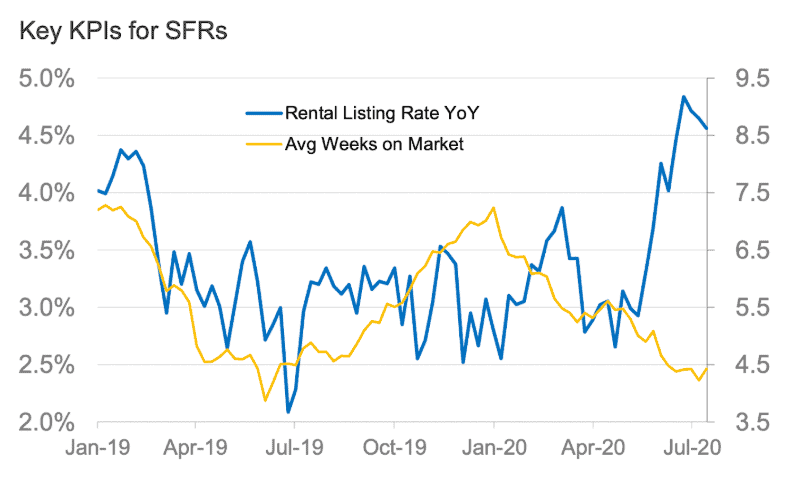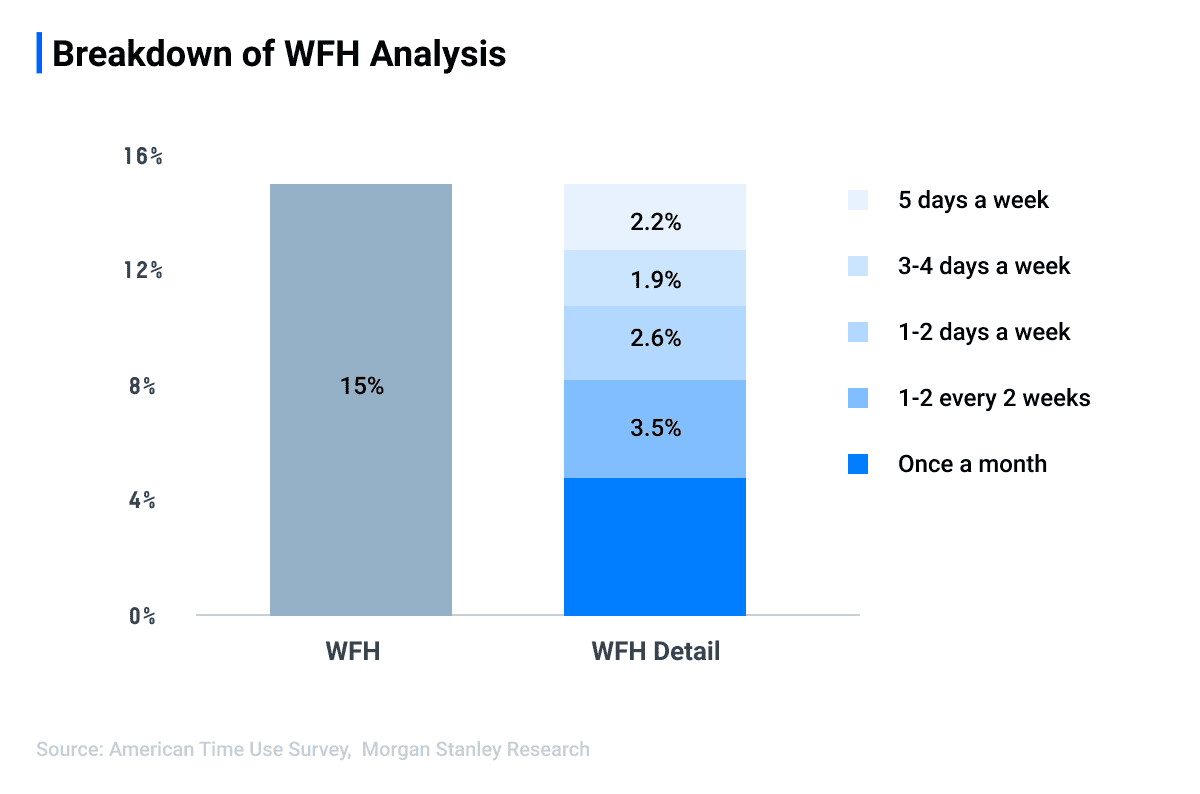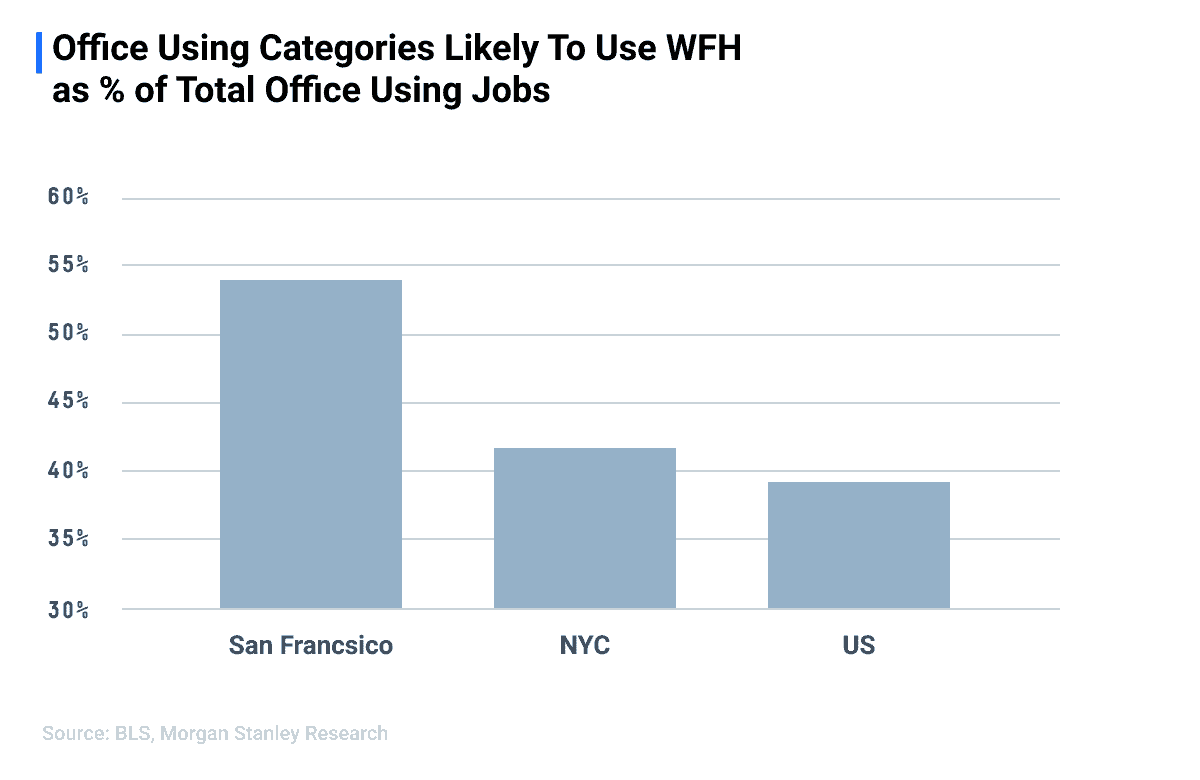Last week, AlphaSense sat down with Richard Hill, Head of US CRE Research at Morgan Stanley, and Vikram Malhotra, Morgan Stanley US Property & REITs Analyst, to discuss the future of commercial real estate in a post-COVID world.
Throughout history, commercial real estate has inherently been a levered asset class; in fact, CRE is viewed as a $7.4 trillion asset class in the United States, encumbered by $3.8 trillion of mortgage debt and half a trillion dollars of outstanding corporate debt. CRE has been a bull market for nearly 40 years, except for short declines in the aftermath of the S&L crisis in the 1990s.
While fundamentals have been solid, one of the driving forces in the rise of property valuations has been the secular decline in 10-year treasury rates incurred over four decades. This has allowed commercial real estate owners to refinance with lower rates, thereby aiding cap rate compression.
Focusing on the previous three recessions, commercial real estate prices declined more than 30% in the great financial crisis, and more than 20% after the S&L crisis. Still, they continued to rise after 9/11 (as growth declines were viewed as transitory).
Several factors make this recession different for CRE:
- Job growth declines are severe, leading to rising vacancies, declining rents, rising delinquency rates (close to 10%)
- The government is providing limited support to commercial real estate debt markets.
- There are record amounts of dry powder that could mitigate price declines (an estimated $300 billion and $1 trillion of buying power)
Compared to apartments, the single-family rental market has recovered. Rental listing rate growth accelerated to above early 2019 peak of 4.6%. Similarly, average weeks on the market stand near the lowest levels since early 2019 at 4.4 weeks.
Source: Morgan Stanley, Rental Listing Rates YoY have increased while average weeks on market has decreased, a positive sign for single-family rentals.
The Household Pulse Survey published by the US Census shows that approximately 5% of rentals are occupied without payment. On-time payments hover around 70%. Multi-family rent inflation has a strong correlation to jobs and supply growth. Currently, jobs are declining while the supply of empty apartments is rising to an all-time high.
How Will a Remote Workforce Affect Real Estate?
Although most markets will be affected by a growing remote workforce, Malhotra focused on two key locations, San Francisco and New York, to discuss how remote work will affect CRE.
Before diving in, Malhotra noted that Morgan Stanley has had a negative view of New York offices for several years, mostly due to supply, coworking spaces, sluggish job growth, and the need for repairs/renovations of older office buildings.
Morgan Stanley’s team of analysts anticipates that work from home will triple by 2024, which will drive an upshift in vacancies in New York and San Francisco. Looking at pre-COVID numbers, Malhotra noted that working from home was quite uncommon, with only about 5% of the workforce working from home more than two days per week.
Source: Morgan Stanley – 15% of Employees Has Days They WFH, but Only ~5% WFH Exclusively 3-5 Days a Week
Morgan Stanley analyzed over 700 occupations to understand what percentage of workers can do their job effectively in a remote work environment. Combined with data from the Bureau of Labor Statistics, the number of people who could work from home is nearly 55% in San Francisco and ~40% in New York. The US, overall, is around 30%. San Francisco is particularly flexible to remote work because of its large population of tech-oriented careers, such as software engineers, who are more predisposed to work from home successfully.
Source: Morgan Stanley – SF has an outsized proportion of core office jobs with high WFH potential
Although the Total Addressable Market is high, the US workforce won’t need to fully transition out of office spaces for real estate to see an impact. The total population of remote workers is highly dependent on income levels, demographics, and education–all together, work from home will result in structurally higher office vacancy.
Vacancy estimates are also impacted by supply and job growth coming out of a post-Covid recession. Offices will likely face impact from social distancing requirements, which state that every office must have at least 175 square feet of space per person.
With all of this said, analysts at Morgan Stanley believe that New York vacancy rates will be around 10-11%, and San Francisco will be approximately 7-8%. To put those statistics into perspective, a 10% vacancy rate is historically a tipping point where landlords start to lose pricing power and where market-to-rent growth goes negative.
Hill and Malhotra also covered housing demand, single-family demand, and demand in a post-Covid world. To read the full report (or to read more Morgan Stanley research) login to AlphaSense, or start a free trial. To access the full webcast, please explore our Expert Briefing Series.






